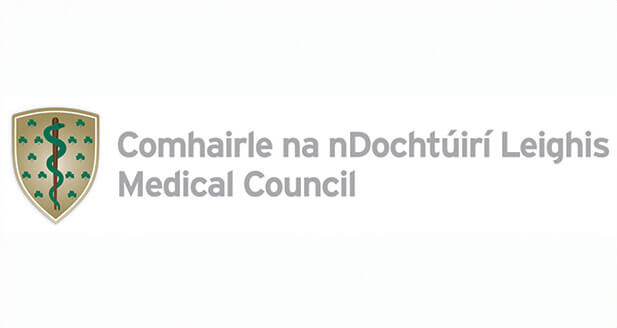It is very important that patients understand a few very basic facts about hair transplantation so that expectations about treatment remain realistic.
What is involved?
Hair transplantation is the artistic redistribution of dominant hair follicles, from the back of the head into the balding areas of the scalp, resulting in a very natural appearance. Simply put, we take a donor strip of hair from where you have more than you need and put it where you need it more.
When should I have a transplant?
A hair transplant can be done in the early stages of hair loss, when the hair is just beginning to thin, or in the later stages when baldness is more obvious. It is important that the hair loss pattern is established before surgery is undertaken. Therefore, young men under 25 are often, in the first instance, offered medical treatment to which they usually respond very well.
Why would I want one?
Hair transplantation is the most effective, long-term solution to male pattern baldness
There have also been excellent results in the treatment of genetic hair loss in some women, as well as in scars resulting from facial surgery, burns, accidents, or as a result of various hair loss diseases.
When there is a large area of baldness, is it possible to cover the entire bald area?
This depends on the size of the bald area as well as on the donor area. When there is extensive baldness, a procedure called a scalp reduction may be useful in order to decrease the size of the bald area. Subsequently, grafting is done as described above.
What is scalp reduction?
Scalp reduction is a procedure which is performed under local anaesthetic in which a large bald area of skin is removed. This leaves a scar on the scalp which must later be camouflaged by grafting directly into the scar.
What is scalp flap surgery?
Scalp flap surgery is a procedure in which an entire segment of hair-bearing scalp is transferred into a bald area. This is a relatively uncommon surgery and it is only performed by a few surgeons.
The risks include improper hair direction at the hairline, as well as the more serious risk of partial or complete loss of survival of the flap and the hair within it. This type of surgery is not carried out in our clinic.
With new surgical techniques, is it possible to restore a full head of hair?
The short answer is no. All hair transplantation procedures move hair around to make you look better, but none creates more hair. However, if performed properly and on the right person, it can bring about a very significant improvement in your appearance.
Why do hair transplants work?
Even in the most extreme balding patterns, a permanent area of hair exists on the sides and back of the head. This hair is unaffected by the balding process. In Follicular Unit Transplantation, a thin strip of skin containing this permanent hair is removed from the back of the head (because the skin of the scalp is flexible, the scalp can be stitched together again after the strip is removed leaving little trace that anything was done). The hair follicles are then carefully removed from that piece of skin and placed in very small surgical sites made in the thinning or balding areas of the scalp.
Once transplanted, this hair behaves as it was programmed to behave in the original area it came from and will grow naturally for the rest of your life.
Who is a good candidate for hair transplant surgery?
Most men with significant thinning or baldness and in good general health are candidates for hair transplantation. In order to determine your suitability a private consultation with one of our consultant surgeons can be arranged. During your consultation, the surgeon will assess your donor density and scalp laxity. They will also determine your balding pattern and take your individual hair characteristics, such as colour and wave, into consideration to develop a plan for a successful hair restoration procedure.
Is it better to begin early?
A hair transplant should be considered when your degree of hair loss is considered, by you, to be unacceptable. Not when you are only worried about future loss or “so no one will notice.” Starting early will often require multiple sessions. Young men under the age of 25 years may not be suitable candidates as their hair loss pattern may not yet be established.
How much hair do I need?
When you have your consultation with one of our consultant surgeons, they will suggest how many grafts may be needed for your procedure. This number will be based on your present balding pattern, what it may become in the future and how much donor hair is available. When an individual has high donor density, the follicular units usually contain multiple hairs, and when an individual has low donor density the follicular units often contain only one hair. In an FUT procedure, if an individual has a very loose scalp, a larger donor strip can be removed, whereas an individual with a tight scalp will have a long narrower donor strip. A patient can increase the laxity of the scalp by carrying out scalp massage in advance of their procedure and our consultant surgeons will advise you at your consultation in relation to this.
Are lasers used in hair transplantation?
Laser hair transplantation has been used with some success. To date, results with lasers have been shown to be inferior to those obtained with traditional non-laser hair transplant surgery. For this reason, they are not in common use. The surgeons at HRBR do not consider it prudent to use lasers for hair transplantation at this time.
What about stereomicroscopes?
Even though they are considered the gold standard, as they can give 20% more yield from the donor strip, stereomicroscopes are only used by a minority of transplant clinics in the world. This is because they are expensive and require more skill and manpower. All of our grafts are produced using stereomicroscopes. We use the very latest technology from Nikon® in the form of Diascopic Microscopes which allows white hairs to be seen during dissection.
Do I require any tests before I can proceed to surgery?
In the case of female patients, if the cause of your hair loss is unknown, we recommend investigation by a Consultant Dermatologist.
Once Androgenetic Alopecia has been diagnosed, and hair transplant surgery recommended, no further tests are necessary in the vast majority of cases. However we perform a pre-operative ECG for all surgery patients which exceeds standards of best practice. We follow the highest standards set out by the National Institute for Clinical Excellence in the UK in their clinical guideline document, “Pre-Operative Tests: The use of routine pre-operative tests for elective surgery.”
Today, hair transplant surgeries routinely take between 8 – 10 hours. This longer surgery time could pose a potential risk to the patient’s heart due to the possibility of prolonged exposure to adrenaline.
As a response to this potential risk, albeit slight, we decided to add an ECG to the pre-operative assessment which assesses every patient’s general health. The patient’s pre-operative assessment takes place approximately one month before their procedure. The patient is seen by two qualified and experienced hair transplant nurses, and one technician.
The assessment includes the taking of a detailed medical history, a blood pressure reading, the patient’s weight, oxygen saturation and any allergies are noted. The donor area is closely examined using Canfield Mirror and a hair count is taken. A hair density count is also recorded and groupings of 1’s, 2’s, 3’s and 4’s are assessed. Any questions or concerns that the patient may have are discussed at this time. We have now incorporated a further element to this routine assessment: an ECG is performed using a 12 lead ECG, using a Mac 1200 ST with automatic interpretation.
Any abnormal ECGs are sent to a cardiologist who prepares a written report/interpretation and will recommend and carry out any necessary further investigations. The month gap between the pre-operative assessment and the procedure date offers enough time for any further cardiac evaluation without interfering with the scheduled surgery.
The National Institute of Clinical Excellence (NICE) recommend that, for planned minor surgical procedures, a resting ECG is carried out on those over 65. We provide pre-op testing for all our patients. In the last six to twelve months 176 patients had pre-op assessments and, of these, 27 ECGs were sent to the cardiologist for testing. Of these, seven were followed up in clinic. All seven were under age 65.
The introduction of a pre-operative assessment into our practice has enabled us to assess the patient’s physical and psychological suitability for the procedure. It also has other advantages: patients are more relaxed when they come in to see the nurse before the surgery; they have more time to ask questions and think about the information we give them; we encourage them to bring their families which results in increased information being obtained and greater support for the patient.
We believe that a pre-operative assessment is essential to a modern hair transplant practice as it cares for both the patient’s physical and emotional needs and, crucially, enables the procedure to be carried out safely. It helps to identify any potential risk and eliminate it.










